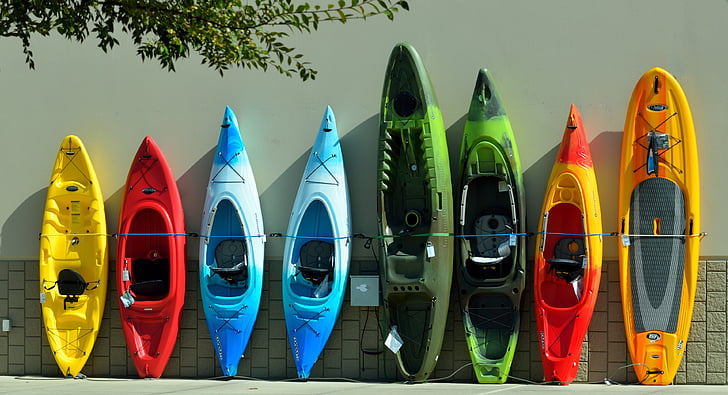When it comes to storing your kayak, are you feeling a little lost? Don’t worry, it’s a common question among kayak enthusiasts. The answer is straightforward yet dependent on various factors. Let’s dive in and explore the pros and cons of storing your kayak upright.
Key Takeaways:
- Proper storage methods can extend the life of your kayak.
- Choosing between indoor and outdoor storage is crucial for kayak maintenance.
- There are various kayak storage solutions to fit your needs.
- Understanding the pros and cons of storing a kayak upright can help make an informed decision.
- Correct storage practices prevent damage and ensure longevity.
The Pros and Cons of Storing Kayak Upright
Before deciding whether to store your kayak upright, let’s weigh the pros and cons. This can help you make an informed decision suitable for your specific needs.

Outdoor Recreation: portal to adventure > Homestead Air Reserve …
| Pros | Cons |
|---|---|
| Space-saving | Potential for pressure dents |
| Easy access | Requires sturdy support |
| Good for indoor storage | May not be suitable for all kayak types |
Kayak Storage Solutions: Indoor vs. Outdoor
Storing a kayak can be done both indoors and outdoors, each having its unique set of advantages and challenges. Let’s break it down.
Indoor Kayak Storage
Indoor storage is often the preferred option, especially during harsh weather conditions. Here are some popular indoor storage methods:
- Kayak Wall Mounts: These are brackets that hold your kayak securely against the wall, saving floor space.
- Kayak Racks: Freestanding racks can hold multiple kayaks and are suitable for garages or basements.
- Kayak Hoists: These pulley systems allow you to store your kayak overhead, making use of ceiling space.
Outdoor Kayak Storage
Outdoor storage might be your only option if you don’t have enough indoor space. Here are some outdoor storage ideas:
- Kayak Storage Shed: A dedicated shed can protect your kayak from the elements.
- Kayak Storage Stands: Stands can keep your kayak off the ground, preventing moisture damage.
- Kayak Storage Covers: Protective covers can shield your kayak from sun and rain.

Source: Pexels.com
Garage Kayak Storage: A Practical Guide
The garage is a popular spot for storing kayaks due to its accessibility and protection from the elements. Let’s explore some efficient garage storage systems.
Kayak Storage Racks
These racks are often designed to hold multiple kayaks, making them ideal for families or avid kayakers. They can be free-standing or mounted to the wall.
Benefits of Kayak Storage Racks
- Space-efficient: Makes use of vertical space, leaving the floor area free.
- Easy to access: You can easily load and unload your kayak.
- Multiple kayak storage: Ideal for storing more than one kayak.
Kayak Storage Hooks
These are a simple yet effective solution for hanging your kayak on the wall. They are easy to install and can be a cost-effective option.
Benefits of Kayak Storage Hooks
- Cost-effective: Affordable compared to other storage systems.
- Easy installation: Can be installed with basic tools.
- Space-saving: Keeps the kayak off the ground and out of the way.
Best Practices for Storing Kayaks: Tips & Tricks
Proper storage can extend the life of your kayak and keep it in good condition. Here are some tips and tricks for the best kayak storage practices.
“Proper kayak storage is more than just keeping it out of the way; it’s about maintaining the integrity and performance of your kayak.” – REI Expert Advice
Regular Cleaning
Before storing your kayak, make sure it is clean and dry. This prevents mold and mildew from developing, which can damage the material.
Use Protective Covers
Whether storing your kayak indoors or outdoors, using a protective cover can shield it from dust, dirt, and UV rays, prolonging its lifespan.
Avoid Pressure Points
When storing your kayak, ensure it is evenly supported to avoid creating pressure points that can lead to dents and deformities.

Source: Pexels.com
Innovative Kayak Storage Systems
The market is flooded with innovative kayak storage systems designed to cater to various needs and preferences. Let’s explore some of these systems.
Kayak Hoists
Kayak hoists are pulley systems that allow you to store your kayak overhead. They are perfect for garages with limited floor space.
- Space-saving: Utilizes ceiling space, freeing up the floor.
- Easy access: Pulley systems make it easy to hoist and lower the kayak.
- Protection: Keeps the kayak safe from accidental bumps and knocks.
Kayak Storage Stands
Stands are a versatile option for storing your kayak both indoors and outdoors. They provide stable support and are easy to move around.
- Versatile: Suitable for both indoor and outdoor use.
- Stable support: Keeps the kayak secure and prevents tipping.
- Mobility: Easy to move and rearrange as needed.
Comparison of Kayak Storage Systems
| Storage System | Advantages | Disadvantages |
|---|---|---|
| Wall Mounts | Space-saving, easy access | Requires sturdy walls |
| Racks | Holds multiple kayaks, stable | Occupies floor space |
| Hoists | Utilizes ceiling space, easy to use | Installation can be complex |
| Stands | Versatile, stable | Requires floor space |
For a visual guide on one of the best kayak storage systems, check out this YouTube video:
Common Kayak Storage Mistakes to Avoid
Even with the best intentions, it’s easy to make mistakes when storing your kayak. Let’s go over some common pitfalls and how to avoid them.
“Storing your kayak improperly can lead to damage that may not be immediately visible but can affect performance and longevity.” – r/kayakfishing
Leaving the Kayak in Direct Sunlight
UV rays can degrade the material of your kayak over time. If you have to store it outdoors, use a UV-protective cover.
Improper Support
Storing your kayak on uneven surfaces or by its ends can cause warping. Make sure it is evenly supported across its length.
Neglecting Regular Maintenance
Regularly inspect your kayak for any signs of damage or wear and tear. Addressing issues early can prevent more significant problems down the line.
Summary of Common Mistakes
| Common Mistake | Solution |
|---|---|
| Direct Sunlight | Use UV-protective cover |
| Improper Support | Ensure even support |
| Neglecting Maintenance | Regular inspections and repairs |
Ultimately, the way you store your kayak can significantly impact its longevity and performance. By understanding the pros and cons of different storage methods, you can make an informed decision that best suits your needs. Remember to prioritize proper support, protection from the elements, and regular maintenance to keep your kayak in top condition.
Frequently Asked Questions
Q: Is it okay to leave a kayak outside in winter?
A: Leaving your kayak outside in winter is not ideal due to the risk of damage from cold temperatures, snow, and ice. If outdoor storage is your only option, make sure to use a high-quality kayak cover and store it securely off the ground to prevent moisture damage.
Q: What is the best way to store your kayak?
A: The best way to store your kayak is to keep it indoors, supported evenly, and protected from the elements. Use storage solutions such as wall mounts, racks, or hoists to ensure it is secure and accessible.
Q: Is it better to store a kayak vertically or horizontally?
A: Both vertical and horizontal storage have their advantages. Vertical storage saves space and can be easier to access, while horizontal storage provides more even support and reduces the risk of pressure dents. Choose the method that best fits your space and kayak type.
Q: Should you store kayak upside down or right side up?
A: It’s generally better to store your kayak upside down or on its side, as this helps distribute the weight more evenly and prevents the hull from warping. Avoid storing it right side up, as this can cause pressure points and deformities.

